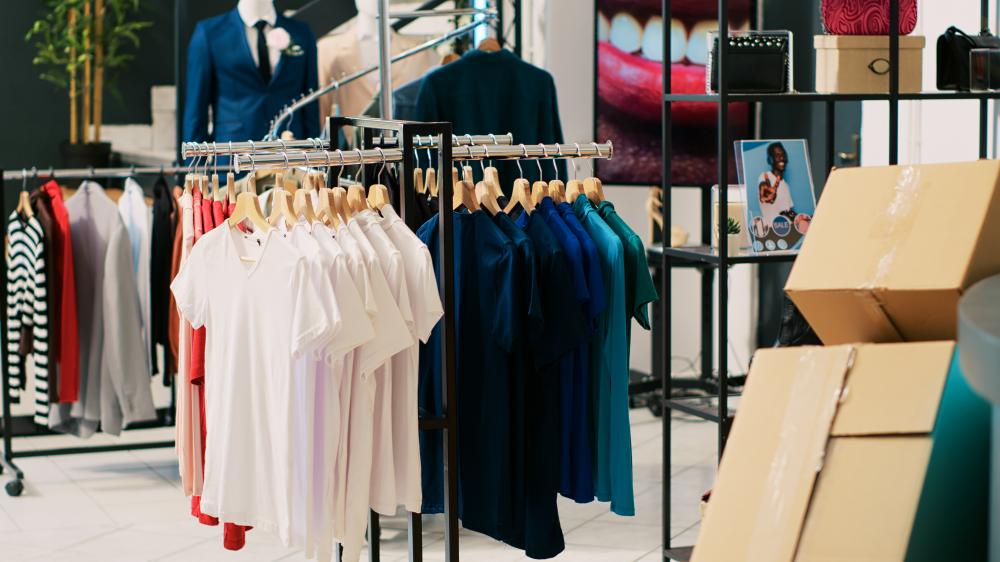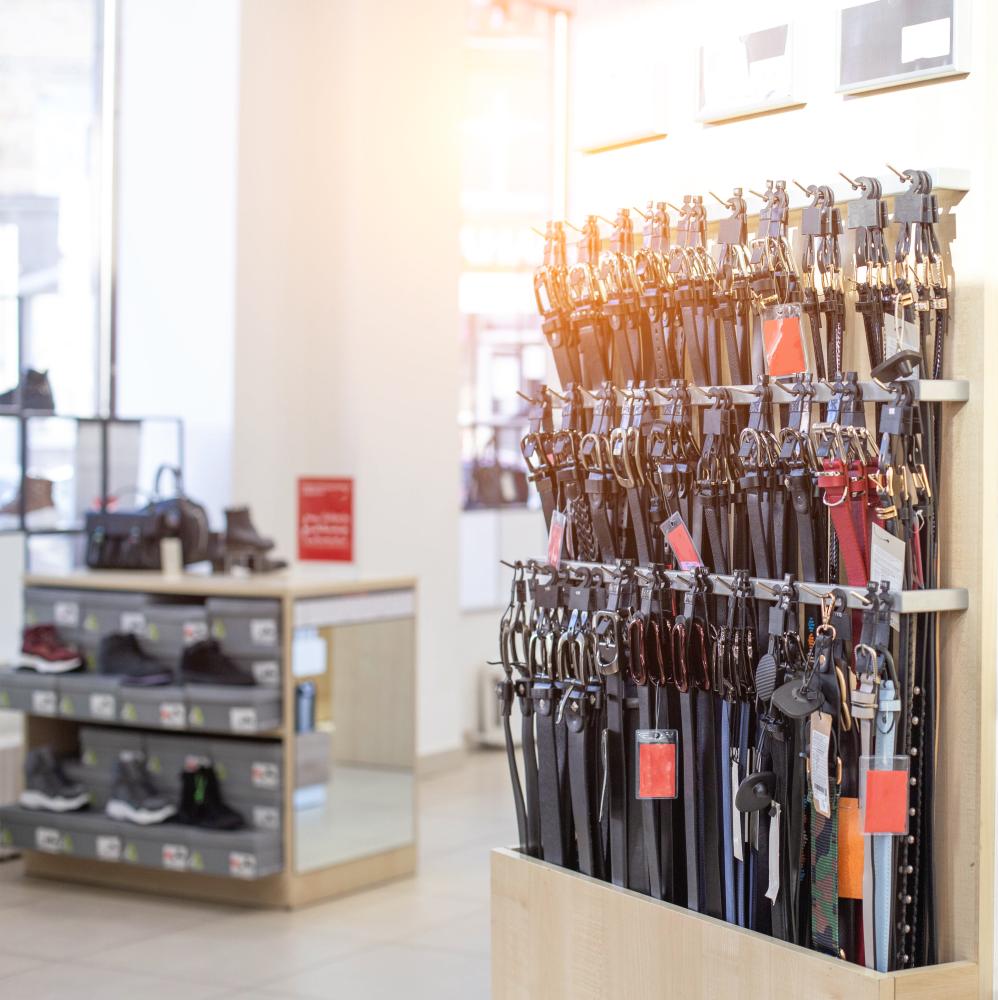The Importance of Custom Retail Displays
Custom retail displays are more than just a way to showcase products; they are a vital component of a retailer’s branding and sales strategy. With two decades under my belt at The Exhibit Company, I’ve seen firsthand how well-designed displays can transform shopper behavior. In a crowded retail environment, distinguishing your brand is a challenge. Custom retail displays help capture attention and make your products the centerpiece of the customer shopping journey. Retailers who prioritize these displays often see a measurable increase in sales and customer engagement. Such displays transform passive browsing into active purchasing, and they do so by appealing directly to the consumer’s senses–visually, spatially, and emotionally.
Custom retail displays can also be a reflection of your brand’s ethos. Every detail, from the choice of materials to the layout, can communicate your brand’s story. It’s not just about selling a product; it’s about creating an experience that aligns with your brand values and speaks to your target audience.
Designing for Impact: Key Elements of Effective Displays
Crafting impactful custom retail displays involves a mix of creativity and practicality. Here at The Exhibit Company, our approach combines both elements to deliver top-notch results. 1. Understanding the Customer Journey: Before designing, we analyze the typical path a customer takes through the retail space. This ensures that the display not only attracts attention but also complements the flow of the store, guiding customers naturally toward the purchase.
2. Material Selection: The materials used can significantly affect a display’s effectiveness. For instance, sustainable materials resonate with eco-conscious consumers, while high-end finishes may appeal to luxury buyers.
3. Lighting: Strategic lighting can highlight products and create an inviting atmosphere. By experimenting with different lighting techniques, we can spotlight bestsellers or draw attention to new arrivals.
4. Modularity and Flexibility: Retail environments are dynamic, often requiring quick shifts based on trends or seasons. Displays that are modular and easy to reconfigure can save time and resources while keeping the retail space fresh and engaging.
5. Interactive Elements: Incorporating technology can elevate a display by making it interactive. Features like touch screens or augmented reality elements not only entertain but can also provide valuable product information in an engaging way.
These elements are the building blocks for successful retail design, turning mere window shopping into a memorable and interactive experience.
While the benefits of custom retail displays are clear, there are common concerns among retailers considering this investment. Let’s tackle a few: Cost: Many retailers worry about the cost involved. However, a well-executed display is an investment, not an expense. It generates ROI through increased sales and brand recognition. By selecting durable materials and a timeless design, the lifespan of the display can be extended, making it more cost-effective over time.
Time and Effort: The process of creating a custom display might seem daunting. At The Exhibit Company, we’ve streamlined this process. Our clients are involved in each step, ensuring the final product aligns with their vision without overburdening them with details.
Adaptability: Retail trends change swiftly. An effective display should be adaptable to new themes or promotions without requiring a full redesign. Utilizing modular components is a solution we frequently recommend to our clients.
What Qualifies as a Custom Retail Displays Emergency?
An emergency in custom retail displays usually pertains to situations where a display fails to function as intended or is damaged, compromising sales and customer experience. In such cases, quick action is imperative to mitigate losses.- Immediate Safety Hazards: Broken or unstable displays that might pose a danger to customers need urgent attention.
- Brand Impact: Displays that misrepresent the brand due to malfunction or wear can harm the brand image, necessitating immediate rectification.
- Sales Interruption: If a display is crucial for driving sales for a specific promotion, any issues that arise must be addressed without delay to prevent loss of revenue.
Creating Memorable Experiences with Custom Retail Displays
The magic of custom retail displays lies in their ability to create memorable shopping experiences. It’s about forging a connection between the product and the consumer, evolving a mere transaction into a sophisticated journey. Telling a Story: Displays that weave a narrative about the product engage consumers on a deeper level. For example, a display themed around sustainability can showcase eco-friendly products, complete with statistics on their positive environmental impact.
Multi-Sensory Engagement: Engaging more than one sense can enhance memory retention. Incorporating texture through interactive elements or scent diffusion can create a multidimensional experience that captivates customers.
Social Media Integration: With the rise of social sharing, creating “Instagrammable” displays can extend a brand’s reach beyond the store. Encouraging customers to share their experiences online can introduce the display–and the product–to a wider audience.
By focusing on immersive and innovative design, these displays are not just about selling; they’re about creating brand advocates who will remember and talk about their experience long after they leave the store.
Best Practices for Implementing Custom Retail Displays
The path to successful implementation of custom retail displays is often paved with thoughtful planning and execution. Here are some best practices to consider:- Start with a clear goal. Know what you want your display to achieve: is it to boost sales, enhance brand visibility, or introduce a new product line?
- Engage with your audience. Use customer feedback and data analytics to tailor your displays to the needs and preferences of your shoppers.
- Monitor performance. Once the display is in place, track metrics such as sales figures, foot traffic, and customer interactions to assess its impact.
- Be dynamic. Regularly update and refresh displays to keep the shopping experience exciting and relevant.
- Collaborate with experts. Partnering with experienced designers and fabricators, like us at The Exhibit Company, ensures that your vision is realized efficiently and effectively.
These steps not only foster a robust retail environment but also pave the way for long-lasting customer relationships.
What makes custom retail displays vital for a brand’s success?
At The Exhibit Company, we’ve seen firsthand how custom retail displays are more than just aesthetic enhancements; they’re critical tools for branding and sales. Imagine you’re a retailer in a bustling shopping center; your display needs to stand out amidst the competition. A well-crafted display not only attracts attention but also aligns with your brand’s ethos and transforms a customer’s interaction with your product from passive browsing to active purchasing. The key here is about creating an experience that resonates with your audience, communicating your brand story, and ultimately boosting customer engagement and sales. Have you thought about how your current displays reflect your brand’s values?
How can a retailer ensure their custom retail displays are effective?
Effective custom retail displays blend creativity with practicality. At The Exhibit Company, we believe in understanding the customer journey to design displays that naturally guide potential buyers toward a purchase. Consider the materials you choose; sustainable options can appeal to eco-conscious consumers, while luxurious finishes might attract high-end buyers. Lighting plays a pivotal role too, as it can highlight your products invitingly. Moreover, incorporating modular designs provides flexibility to adapt to trends or seasonal changes, which saves both time and resources. Have you considered how interactive or technological elements could further engage your customers?
What are common concerns with custom retail displays, and how can they be addressed?
Cost, time, and adaptability are frequent concerns among retailers contemplating custom retail displays. Many view the cost as prohibitive, but at The Exhibit Company, we consider it an investment toward higher sales and brand recognition. By using durable materials and timeless designs, you can extend the display’s life and make it more cost-effective. While the process may seem daunting, our streamlined approach ensures clients are involved yet not overwhelmed. Modular components offer a solution to adaptability issues, allowing displays to conform to new themes or promotions easily. How does your current strategy address these concerns?
What qualifies as an emergency with custom retail displays?
In the world of custom retail displays, emergencies often relate to functionality and safety issues. Imagine a display that’s unstable or broken; it not only poses a risk to customers but also damages your brand’s image. Quick action is crucial to mitigate any negative impact on sales. For instance, if a display is pivotal for a promotional event, any malfunction could lead to missed revenue opportunities. Our team at The Exhibit Company is always ready to address such emergencies promptly. When was the last time you assessed the stability and effectiveness of your displays?
How can custom retail displays create memorable shopping experiences?
Custom retail displays hold the power to elevate a shopping journey from a simple transaction to a captivating experience. At The Exhibit Company, we encourage storytelling through displays; for instance, a sustainability-themed setup could not only showcase eco-friendly products but narrate their environmental impact. Engaging multiple senses can further enhance memory retention, making your display memorable. With the rise of social media, creating shareable, “Instagrammable” displays can extend your reach beyond physical boundaries. Imagine a display so compelling that customers can’t help but share it with their networks. What story does your display tell?
What are some best practices for implementing custom retail displays?
Successfully implementing custom retail displays starts with clear objectives. Do you want to boost sales, increase brand visibility, or launch a new product? Engage with your audience by using customer feedback to tailor displays to their preferences. Once your display is set up, monitor its performance through metrics like sales and foot traffic. At The Exhibit Company, we emphasize the importance of keeping displays fresh and relevant through regular updates. Collaborating with experts can also ensure that your vision is effectively realized. What goals have you set for your displays, and how are you tracking their success?

